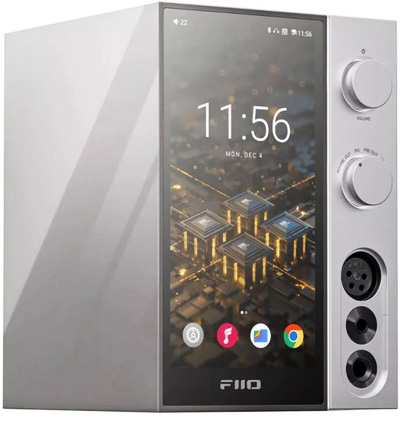INTRODUCTION

If there's one thing I’ve liked about the electronics industry as far back as i can remember it's that there's always something new and innovative getting released which will pique my interest whenever I least expect it. Take the R7 All-In-One Desktop Android HiFi Music Player by FIIO for example which took the market by storm last year both due to its performance and features (looks too). Yes, it wasn't perfect, but it was better than most similar devices in the market, even some which cost almost double what it retailed for. So, you can imagine my surprise when FiiO released the higher-end R9 model this year aimed towards audiophiles who wanted a lot more than what the already very good R7 was capable of.
FIIO was established in 2007 and has experience in researching and developing countless portable music products of different types, and sell FIIO-branded products through sales agents worldwide. The brand name FIIO is composed of Fi (fidelity from HiFi) and iO (number 1&0), representing the real feeling and convenient life that digital brings to life. Meanwhile, the Chinese “飞傲” is the transliteration of FIIO, indicating the positive and innovative spirit as thriving as spring. FIIO is focused on product quality, adheres strictly to ISO9001 standards in quality management and works hard to attain the lowest repair-related product returns rate.
Much like the R7 the brand new R9 is also based on the open Android v10.0 OS and was designed to cover a wide range of roles including being a DAC, DAP, fully balanced headphone amp and yes, even a music streamer. Inside its all-aluminum enclosure (which is very similar to that of the R7) FiiO has squeezed the Qualcomm Snapdragon 660 SoC (Kryo 260 CPU / Adreno 512 GPU / Hexagon 680 DSP), two 8-channel ESS Sabre ES9038PRO DACs in parallel connection (32-bit 8-channel with up to 140dB DNR and -122dB THD+N / support up to 32-bit 768kHz PCM, DSD256 via DoP, DSD512 and native DSD1024 / 24-bit 96kHz optical in, 24-bit 192kHz optical out / 24-bit 192kHz HDMI in/out), 8-channel THX AAA-788+ onboard headphone amplifier (also parallel connection - 7300mW power output), XU316-1024 XMOS 32-bit multicore microcontroller (16 real-time logical cores on 2 xCORE tiles - up to 2400MIPS in dual issue mode / up to 1200MFLOPS), 4GB LPDDR4 RAM, 64GB flash storage (roughly 46GB available), Qualcomm WCN3980 / QCC5125 Bluetooth v5.1 transmitter / receiver (supports aptX, aptX Adaptive, aptX HD, LHDC and LDAC audio codecs), OPA2211 op-amps (silicon-germanium CMOS manufacturing process), ELNA electrolytic capacitors and an 40W industrial-grade switching power supply (low noise, high efficiency - can also be powered by an external DC power supply). Just like with the R7 at the front of the R9 FiiO has placed an touch screen display which however this time is not only larger (6-inch / 5-inch) but also sports higher resolution (1080x2160p / 720x1280p), front RGB LED rings (again colors change depending on use and audio codec), RGB LED strip going through the front and top (same deal as the rings), SD card slot (up to 2TB capacity cards supported) and as for available connectors this time they've really pushed the envelope. To be more precise the FIIO R9 sports a 4-pin XLR port, 4.4mm balanced port and a 6.35mm port at the front and two stereo RCA outputs, two 3-pin XLR balanced output, coaxial in/out ports, optical S/PDIF in/out ports, HDMI in/out ports (ARC), RJ45 Ethernet port (100M), USB-A host port and a USB-C port (DP mode). Well, FiiO seems to have created a winner with their new R9 so let's get close and personal with it.

 O-Sense
O-Sense







.png)

